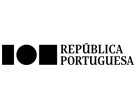


Publication in the Diário da República: Despacho n.º 8645/2020 - 08/09/2020
6 ECTS; 2º Ano, 1º Semestre, 30,0 PL + 30,0 TP + 5,0 OT , Cód. 964569.
Lecturer
- Alexandre José de Magalhães Figueiredo (1)(2)
(1) Docente Responsável
(2) Docente que lecciona
Prerequisites
Non applicable.
Objectives
At the end of the semester, the student should be able to understand and autonomously execute the photographic printing processes covered;
Knowing how to distinguish characteristics and potentialities of the execution of different printing processes;
Understand and interpret variables adjacent to processes such as: contrast, density, veil, detail reproduction;
Raise awareness of sustainable use of printing techniques, minimizing environmental impact. Putting into practice the critical sense and autonomy to circumvent printing errors and defects and be able to, with complete autonomy, execute a creative project at the end of the course.
Program
Part 1 - Strict production of large format analog matrices.
Part 2 - Printing on salted paper. Skills acquired: ability to assess the density and contrast of a negative, ability to manipulate the chemistry of processes in silver, ability to assess the quality of a paper for printing in this process.
Part 3 - Printing on albumin. Skills acquired: ability to uniformly cover the paper sheet as a binding medium, ability to manipulate and process the printing paper in order to avoid smudges and densities on the back, ability to assess the quality of a print negative in this process.
Part 4 - Production of an ambrotype (wet collodion process).
Part 5 - Produce a final creative project using one or a combination of several printing techniques covered throughout the course.
Evaluation Methodology
The assessment is continuous and consists of:
Attendance, Participation, Attendance - 5%
3 practice exercises-30%
1 written assessment test-25%
Final project-40%
To pass the Regular Season, the student must obtain a grade of 9.5/20, based on the weighted arithmetic average of the assessment elements described above. To be eligible for assessment, the student must have submitted all practical exercises with a minimum grade of 8/20; having taken the written test; have delivered the final project with a minimum grade of 8/20.
Students with a final UC grade lower than 8/20 are excluded from subsequent evaluation periods. Students with a final UC grade higher than 8/20 will be able to take advantage of subsequent evaluation periods for approval or improvement. Approval or improvement only applies to the elements of final project evaluation and oral test of theoretical knowledge.
The same methodology is applied to subsequent Assessment Times.
Bibliography
- Crawford, W. (1979). The Keepers of Light: A History and Working Guide to Early Photographic Processes. London: Morgan & Morgan
- Glafkides, P. e Hornsby, K. (1958). Photographic Chemistry. London: Fountain Press
- James, C. (2007). The Book of Alternative Photographic Processes. New York: Delmar Cengage Learning
- James, R. (1980). Albumen and salted paper book. The History and Practice of Photographic Printing. New York: Light Impressions Corp
Teaching Method
Expository, theoretical classes supported by audiovisual resources combined with laboratory practice and experimentation.
Software used in class
Silverfast
Adobe Photoshop
















